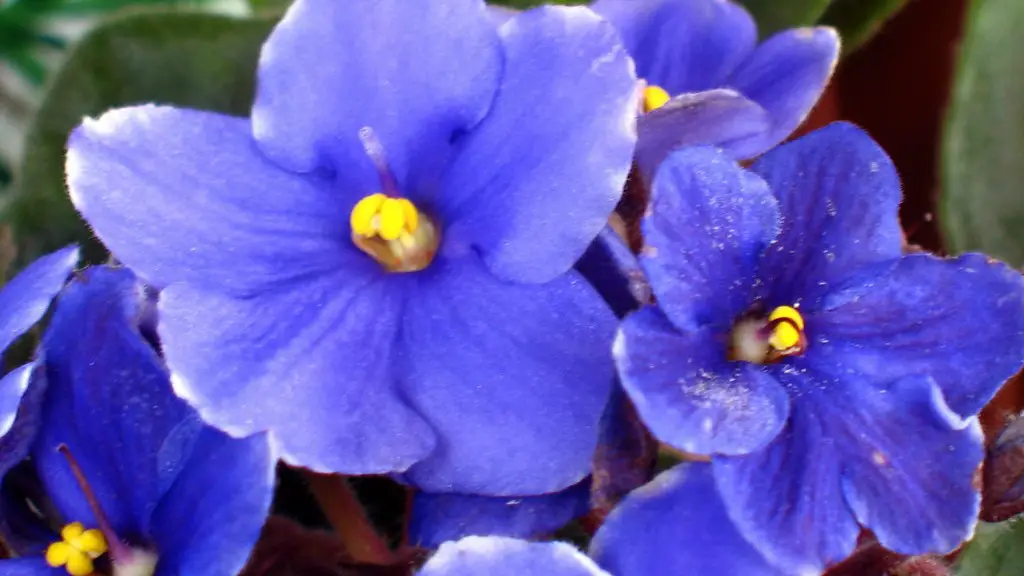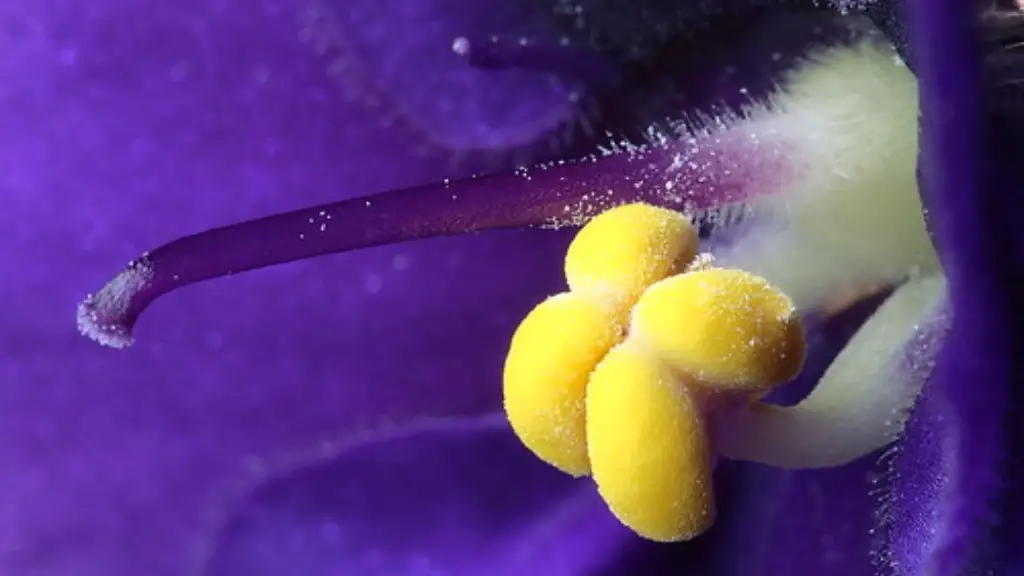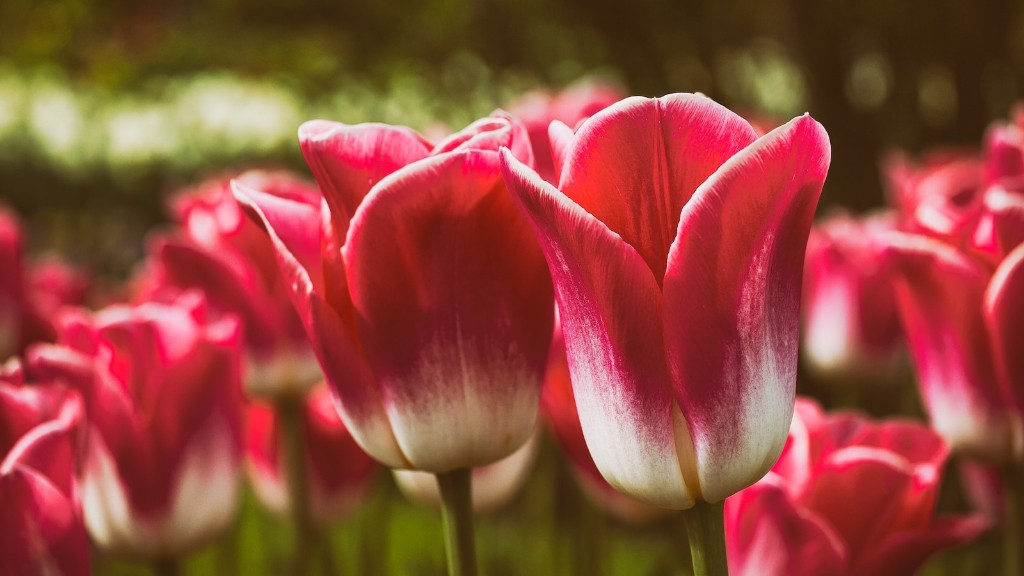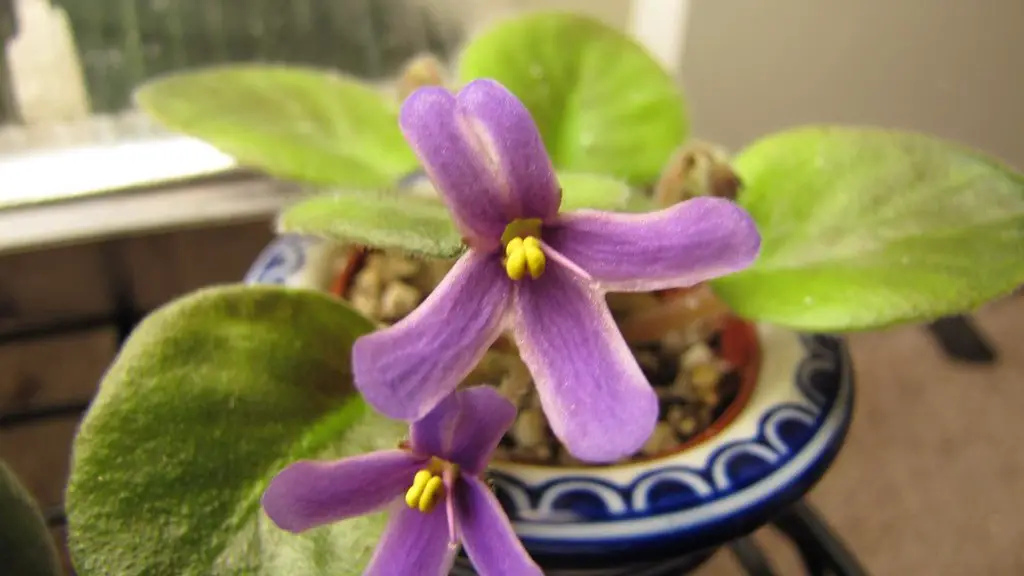The majority of African violets (Saintpaulia) are native to Tanzania, where they grow in the cool, moist forest understory. These conditions are far different from the average home, which has much higher temperatures and much drier air. As a result, many people believe that African violets are high light plants, when in reality they are low light plants.
Yes, African violets are low light plants. They can tolerate a wide range of light conditions, from bright light to low light, and will still bloom beautifully.
Can African violets grow in low light?
When African violets are given ample indirect light, they grow well, stay healthy, and produce abundant flowers. However, if they do not receive enough light, they will have few or no flowers and their leaves will become darker green and thin with long, weak stems. African violets can be easily grown under artificial lights.
If you want your plants to have the best color and blooms, grow them in bright, indirect light. A plant stand three feet away from a west- or south-facing window is an ideal location. Plants will still grow when situated right beside north- or east-facing windows, but leaves will be thin and spindly, and plants less likely to bloom.
How much light does African violets need
A fluorescent light fixture suspended 8 to 10 inches above plants and left on for 12 to 16 hours per day should provide sufficient light for African violets. This will help them to grow strong and healthy.
African violets are low-growing plants that thrive in the shade of other vegetation. In their native environments, direct light never touches their leaves. Your African violets will do best in an environment that mimics this. Provide bright light, but never direct sun.
How often should African violets be watered?
A wicking system is a great way to make sure your African violets are never over watered. The system works by wicking water up from a reservoir into the soil of the plant. The water then evaporates, leaving the plant roots dry. This prevents the plant from being over watered, and also allows the plant to get the water it needs on a regular basis.
African violets are beautiful houseplants that can brighten up any space. Although they have different care requirements than most houseplants, they are not difficult to care for. The key elements of potting, light, water, and temperature are all important factors in keeping your African violet happy and healthy. With a little care and attention, your African violet can be a beautiful and long-lasting addition to your home.
Should African violets be misted?
African violets are susceptible to crown rot, so it is important to not saturate the crown of the plant with water. Water on the foliage may cause permanent leaf spotting. Use room temperature water when misting the foliage.
As a general rule, African violets do best when they are slightly pot-bound, so choose a pot that’s on the smaller side. Professional growers usually recommend a pot size of 3-4 inches in diameter for a standard African violet plant.
Should you touch African violet leaves
It is not recommended to brush the leaves of african violets as this can gradually decrease the plant’s quality and size.
If you’re growing African violets, it’s important to use shallow pots that are breathable and have good drainage. The roots of these plants don’t go very deep, so they prefer to spread out sideways. This means that you need to be careful not to overwater them, as this can easily lead to root rot. Make sure your pot has adequate drainage holes so that you can water from underneath.
What pots are best for African violets?
When it comes to African violets, there are a few key things to look for in a pot. First, you want a pot that is self-watering. This will help to keep your plant healthy and hydrated. Second, you want a pot with a saucer. This will help to catch any excess water and keep your plant from becoming waterlogged. Third, you want a pot that is aerating. This will help to keep your plant’s roots healthy and prevent them from becoming waterlogged. Fourth, you want a pot that is made from a durable material. Fifth, you want a pot that is large enough to accommodate your plant’s root system. Sixth, you want a pot that has good drainage. A pot with good drainage will help to prevent your plant from becoming waterlogged and will also help to keep your plant’s roots healthy.
African violets need to be repotted every two to three years. This is because they have a very long lifespan and can last up to 50 years. However, it is important to remember that they need to be repotted in order to keep them healthy and thriving.
Do African violets like to be watered from the bottom
African violets are best watered from the bottom up. Place the plant in a shallow tray of water for 30 minutes to allow the soil to soak up the water through the drainage holes at the bottom of the pot.
If you’re growing African violets, it’s important to make sure you don’t overwater them. Too much water can leave them susceptible to deadly pathogens like Pythium, Root Rot, and Crown Rot. Instead, water them just enough to keep the soil moist, but not soggy. This will help ensure your plants stay healthy and vibrant.
How do you keep African violets blooming?
If you’re looking to add some color to your home with flowers, impatiens are a great option. They prefer bright, indirect sun and an east-facing window is ideal. Too little sunlight can cause them to stretch for the light and produce few or no flowers, while too much sun can burn the leaves. They also need eight hours of darkness every night. With a little care, you can enjoy these beautiful blooms all season long.
If you are unsure about the quality of your tap water, it is best to use filtered or distilled water for your African violets. This will help to ensure that your plants get the best possible growing conditions.
Conclusion
Yes, African violets are low light plants. They can grow in any type of light, but they prefer low light conditions.
Yes, African violets are low light plants. They can tolerate a wide range of light levels, from full sun to low light, making them ideal for a variety of settings. African violets are also relatively easy to care for, making them a great choice for beginner gardeners or those with limited space.





